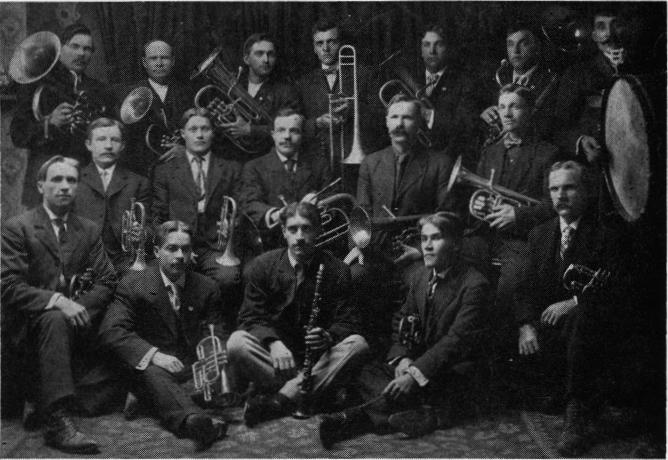as well as its name, also went through several changes, and furthermore, many of the singers also performed in workers' or other independent choruses as well.
The Sivistyshistoria of Ilmonen is the source of the oftenrepeated account that organist-choirmaster K. Ekström was the director of the Virginia church choir as early as 1895, after which began the 20-year period of activity in the choral field by Emil Björkman, who brought the Finnish choruses of Virginia into a period of ascendancy. This led, for example, to the winning of second prize in performances at the Chicago World Fair in 1933.

The Virginia Workers' Band in 1910. Front row, Sulo Löyvä, Isak Wålmä,
unknown, Alfred Tasti, John Nykänen. Second row: Yrjö Helin, John Forsman,
Antti Tiikkainen, Tuomas Pakarinen, Konstu Sarell. Third row: William Mäki,
Mikko Koski, Hjalmar Lundström, unknown, Julius Jalkanen, John Markkanen,
Iivari (last name unknown).
The permanent centers of interest in choral activity were the temperance society and the socialist chapter. The directors of the latter will be listed subsequently, but other directors of choral work in Virginia have included Jack Anderson, who began his work with the local Luther League and later directed several church choirs, at one time four of them simultaneously. His chief contribution, however, was the starting of the male chorus, Suomi, some years before World War II, a group which came to national attention when it performed on the radio program, "I Hear America Singing," in 1940, which was written up in Life. When
421